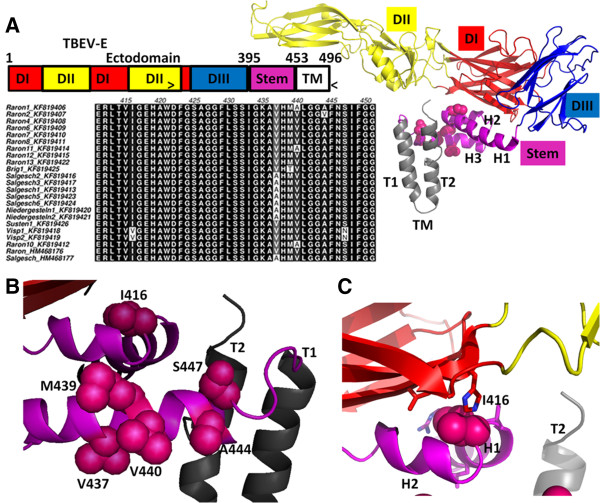Figure 4.

Locations of the mutations in the Envelope protein of TBEV are shown. (A) Left, top: the primary structure of the TBEV envelope protein and its organization into the ectodomain, stem, and trans-membrane (TM) region. The region encompassing amino acid residues 249-496 (indicated by “>” and “<”) corresponds to the terminal part of the envelope gene that was sequenced in this study. All non-synonymous substitutions in the partial sequences of the Canton Valais TBEV isolates mapped to the stem region of the Envelope protein. (A) Left, bottom: Alignment of the Envelope protein amino acid sequences of the 21 Canton Valais TBEV isolates reported in this study and two reference sequences (Raron_HM468176 and Salgesch_HM468177). Amino acid substitutions were found at positions 416, 437, 439, 440, 444 and 447. Right: the three-dimensional structure of a single TBEV E molecule based on the homology model of the dengue virus E molecule (PDB 3 J27). The N-terminal ectodomain is attached to the stem and consists of three domains: central domain (D1; in red), the fusion domain (D11; in yellow), and the lateral domain (DIII; in blue). The stem consists of three helices (H1, H2, and H3; in magenta) and the side chains of the amino acid substitutions are shown (pink spheres). The two trans-membrane helices (T1 and T2; in gray) are inserted in the viral membrane. (B) Close-up of the variable residues in the H3 helix of the stem. The mutated residues are labeled. (C) Close-up of the mutant I416 residue, which projects into a hydrophobic pocket (residues lining this pocket are displayed as sticks).
